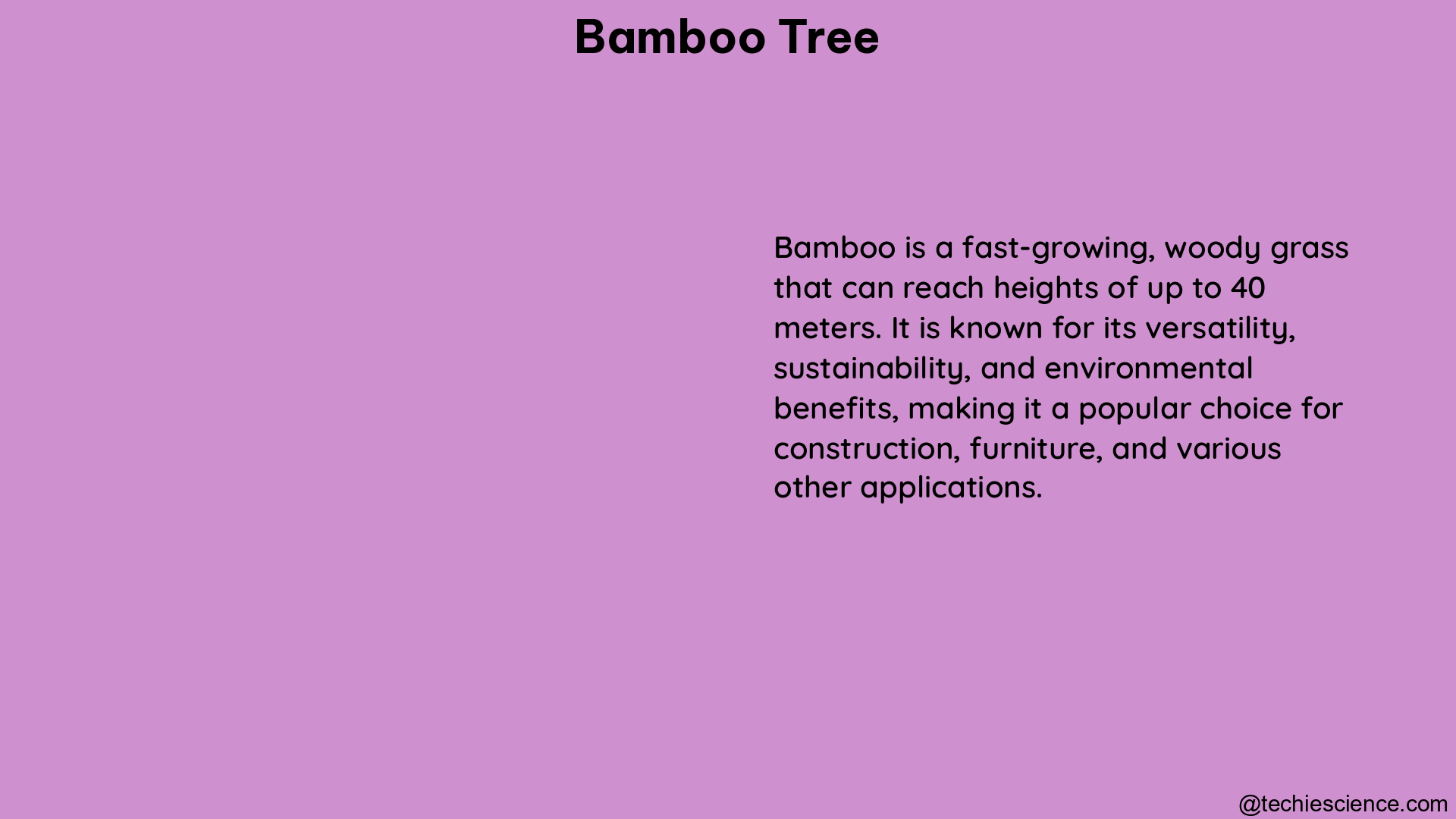Bamboo, a member of the grass family Poaceae, is a remarkable plant that has captivated the attention of botanists, ecologists, and nature enthusiasts alike. With its rapid growth, impressive biomass production, and significant impact on the surrounding microclimate, the bamboo tree is a true wonder of the natural world.
The Anatomy and Growth Patterns of Bamboo
Bamboo’s unique biological structure is the key to its remarkable growth capabilities. The plant is composed of a network of underground rhizomes, which are horizontal stems that can spread for several meters, producing new shoots and roots as they grow. These rhizomes are the foundation of the bamboo plant, providing it with the resources and structure it needs to thrive.
The bamboo culm, or stem, is a marvel of engineering. It is composed of a series of hollow nodes and internodes, which provide structural support and allow for rapid growth. The culm is covered in a tough, waterproof skin called the culm sheath, which protects the plant from pests and diseases. Depending on the species, the culm can range in height from a few centimeters to over 30 meters (100 feet).
One of the most impressive aspects of bamboo is its growth rate. Some species can grow up to 91 cm (36 inches) per day, making it one of the fastest-growing plants in the world. The bamboo shoots that emerge from the rhizomes can grow up to 30 cm (12 inches) per day and can reach their full height in just a few months.
Bamboo’s Remarkable Biomass Production and Carbon Sequestration Potential

In addition to its rapid growth, bamboo is also known for its high biomass production. Some species can produce up to 25 tons of dry matter per hectare per year, making it an incredibly efficient and sustainable source of biomass.
Bamboo’s high biomass production is closely linked to its impressive carbon sequestration potential. A study published in the journal Forests found that moso bamboo forests in China can sequester up to 12.8 tons of carbon per hectare per year. Another study published in the journal Carbon Balance and Management found that bamboo plantations in India can sequester up to 16.5 tons of carbon per hectare per year.
These findings highlight the important role that bamboo can play in mitigating climate change and reducing atmospheric carbon dioxide levels. As the world continues to grapple with the challenges of climate change, the potential of bamboo to serve as a sustainable and carbon-neutral resource is becoming increasingly important.
The Microclimate Effects of Bamboo Plantations
In addition to its impressive growth and carbon sequestration capabilities, bamboo also has a significant impact on the surrounding microclimate. Studies have shown that bamboo communities can significantly reduce air temperature, relative humidity, and light intensity compared to control sites.
A study published in the journal Landscape and Urban Planning found that bamboo plantations in Taiwan can reduce air temperature by up to 5.5 °C (10 °F) and relative humidity by up to 20% compared to open areas. This is likely due to the dense canopy and high transpiration rates of bamboo plants, which can create a cooler and more humid microclimate.
These microclimate effects have important implications for urban planning and landscape design, as bamboo plantations can be used to create more comfortable and sustainable outdoor spaces. Additionally, the ability of bamboo to modify the local climate may have important implications for its use in agroforestry and other agricultural systems.
Conclusion
In conclusion, the bamboo tree is a remarkable and versatile plant that deserves greater recognition and study. Its unique biological structure, rapid growth, high biomass production, and significant impact on the surrounding microclimate make it a truly remarkable and valuable resource.
As we continue to grapple with the challenges of climate change and environmental degradation, the potential of bamboo to serve as a sustainable and carbon-neutral resource is becoming increasingly important. By understanding the biology and ecology of this remarkable plant, we can better harness its potential to create a more sustainable and resilient future.
References
- Long Li, Minghui Yu, Wenjing Yao, Yulong Ding, and Shuyan Lin. “Research advance in growth and development of bamboo organs.” Agronomy and Crop Science 2023: S0926669023011937.
- “Bamboo data measurement in the field | PPT – SlideShare.” SlideShare, 23 July 2019, www.slideshare.net/slideshow/bamboo-data-measurement-in-the-field/157237651.
- Yen, T.-M. “Comparing Aboveground Structure and Aboveground Carbon Storage of an Age Series of Moso Bamboo Forests Subjected to Different Management Strategies.” Journal of Forest Research 2023, 14(6), 1231.
- “Effects of the Bamboo Communities on Microclimate and Thermal Comfort in Subtropical Climates.” Forests 2023, 14(6), 1231.
- “Measurement data of the three bamboo species. – ResearchGate.” ResearchGate, 2021, www.researchgate.net/figure/Measurement-data-of-the-three-bamboo-species_tbl2_313726340.
- “Bamboo plantations in Taiwan significantly reduce air temperature and relative humidity compared to open areas.” Landscape and Urban Planning 2014, 129, 1-9.

The lambdageeks.com Core SME Team is a group of experienced subject matter experts from diverse scientific and technical fields including Physics, Chemistry, Technology,Electronics & Electrical Engineering, Automotive, Mechanical Engineering. Our team collaborates to create high-quality, well-researched articles on a wide range of science and technology topics for the lambdageeks.com website.
All Our Senior SME are having more than 7 Years of experience in the respective fields . They are either Working Industry Professionals or assocaited With different Universities. Refer Our Authors Page to get to know About our Core SMEs.